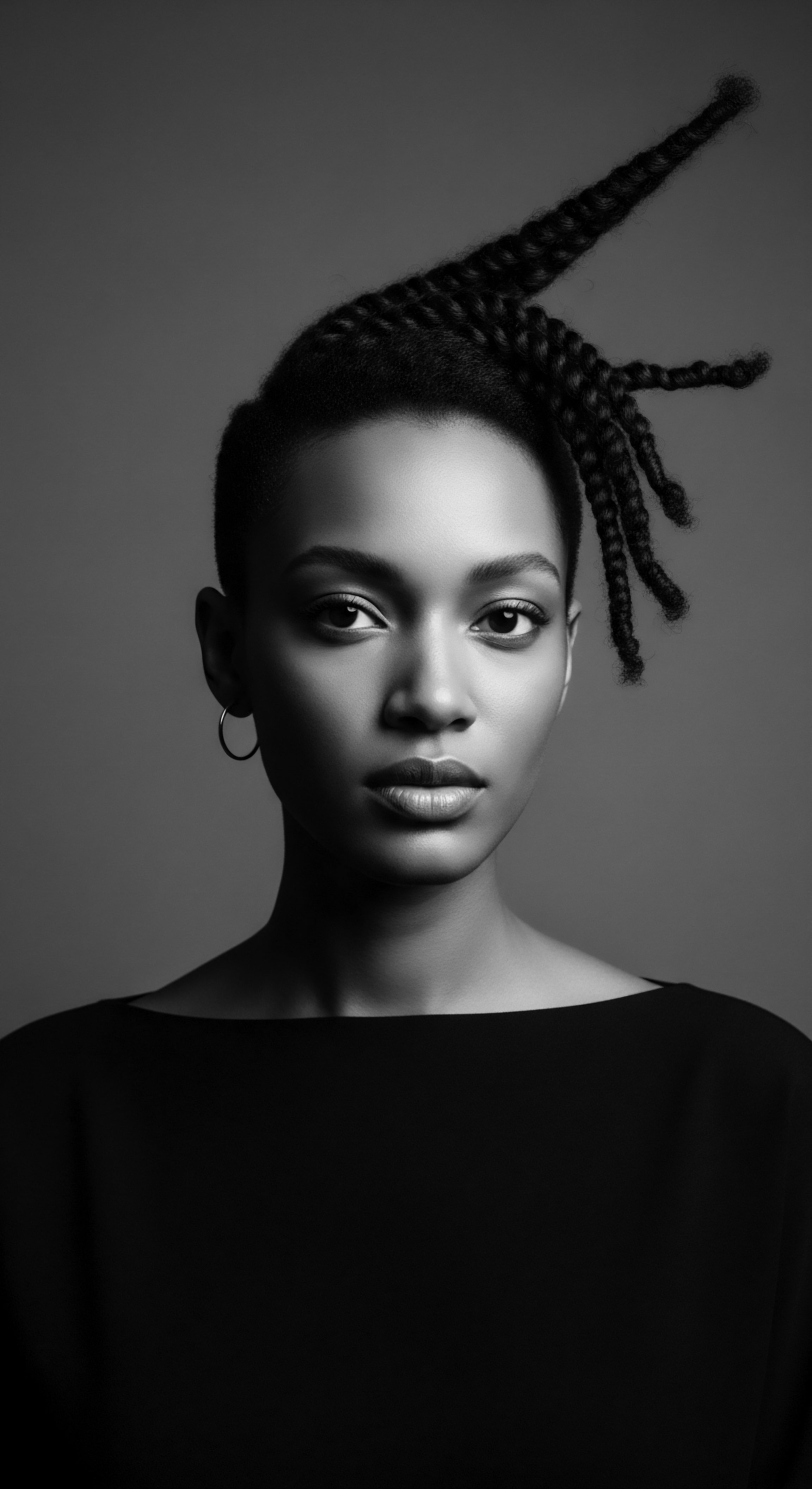
Fundamentals
The concept of Heritage Adornment, at its foundational level, speaks to far more than mere embellishment of the hair; it is a profound declaration, a living archive of identity, lineage, and cultural continuity. It represents the deliberate, often ceremonial, practice of styling and accentuating textured hair in ways that directly connect to ancestral traditions, communal values, and historical narratives. This initial understanding reveals that Heritage Adornment is not a fleeting trend, but a deeply rooted system of expression passed through generations. Its core meaning extends beyond the visible elements, encompassing the rituals of care, the communal gatherings for styling, and the stories carried within each strand.
Across various cultures, particularly within the vast and vibrant landscapes of Africa and its diaspora, hair has always held a distinguished place, serving as a medium for communication and a testament to social standing. From the earliest communal gatherings, the intricate work of shaping and decorating hair was an act of both beauty and profound significance. This initial understanding invites one to consider the deeper implications of what it means to adorn one’s hair with purpose, drawing from the wisdom of those who came before.
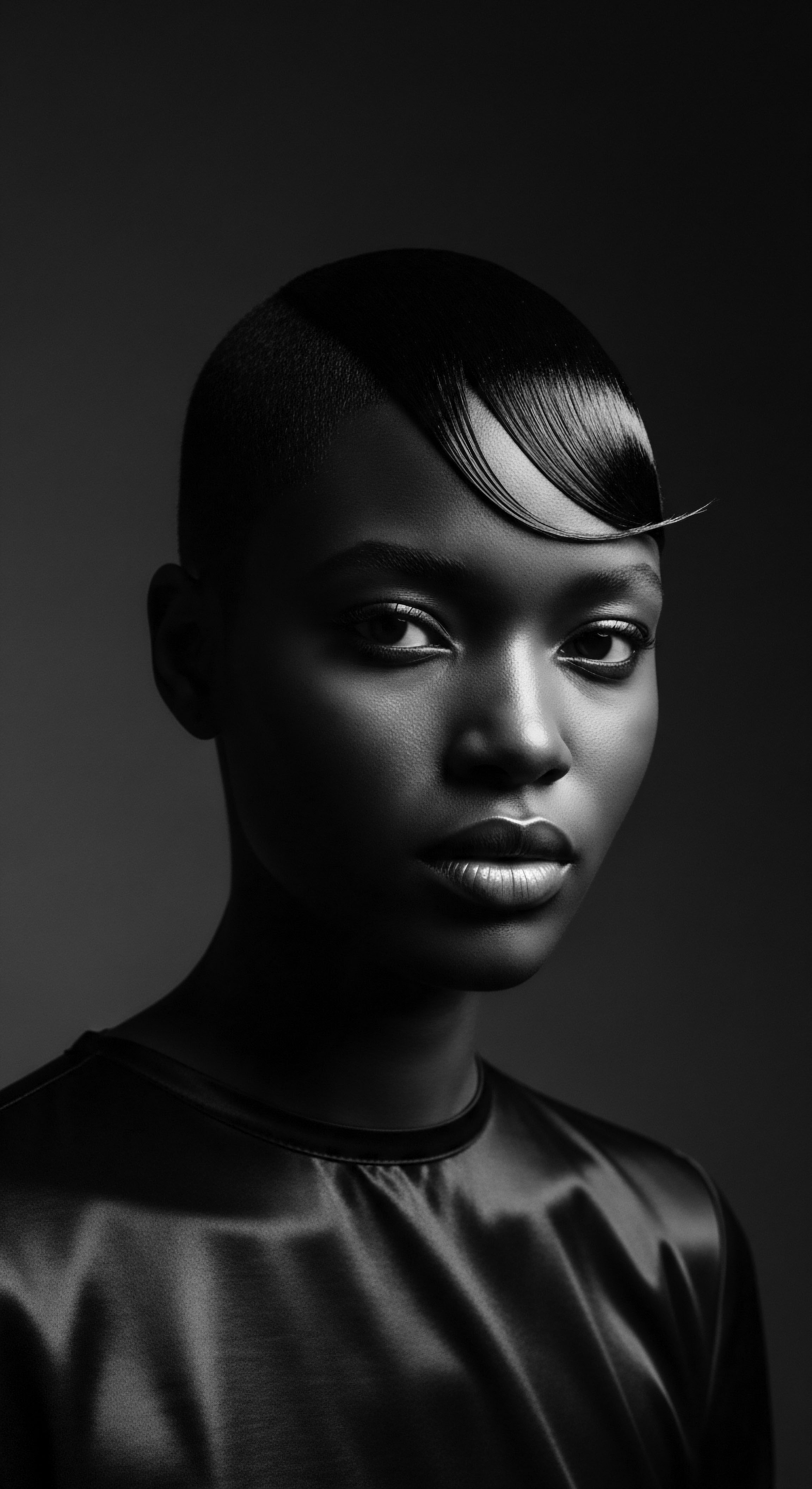
The Early Whisperings of Form and Function
In ancient African societies, the styling of hair was an intricate social grammar, a visual language understood by all. Each braid, each coil, each carefully placed accessory, articulated specific details about an individual’s life, their family, their community, and their place within it. These were not random acts of personal flair.
They were codes of conduct, markers of maturity, symbols of marital status, and indicators of spiritual connection. The very methods used to prepare and shape hair, often involving hours of communal effort, cemented bonds and fostered a shared understanding of self within the collective.
Consider the ancient Egyptians, for instance, where elaborate wigs and natural styles, often augmented with gold and beads, conveyed wealth and a direct connection to the gods. Young girls wore distinctive side-locks, signifying their innocence, while married women adopted more structured styles, linking them to deities of fertility. This historical context clearly establishes that hair, even in antiquity, was an extension of one’s societal role and spiritual alignment.
Heritage Adornment embodies the profound cultural and historical practices of styling textured hair, reflecting lineage and communal identity beyond mere aesthetics.
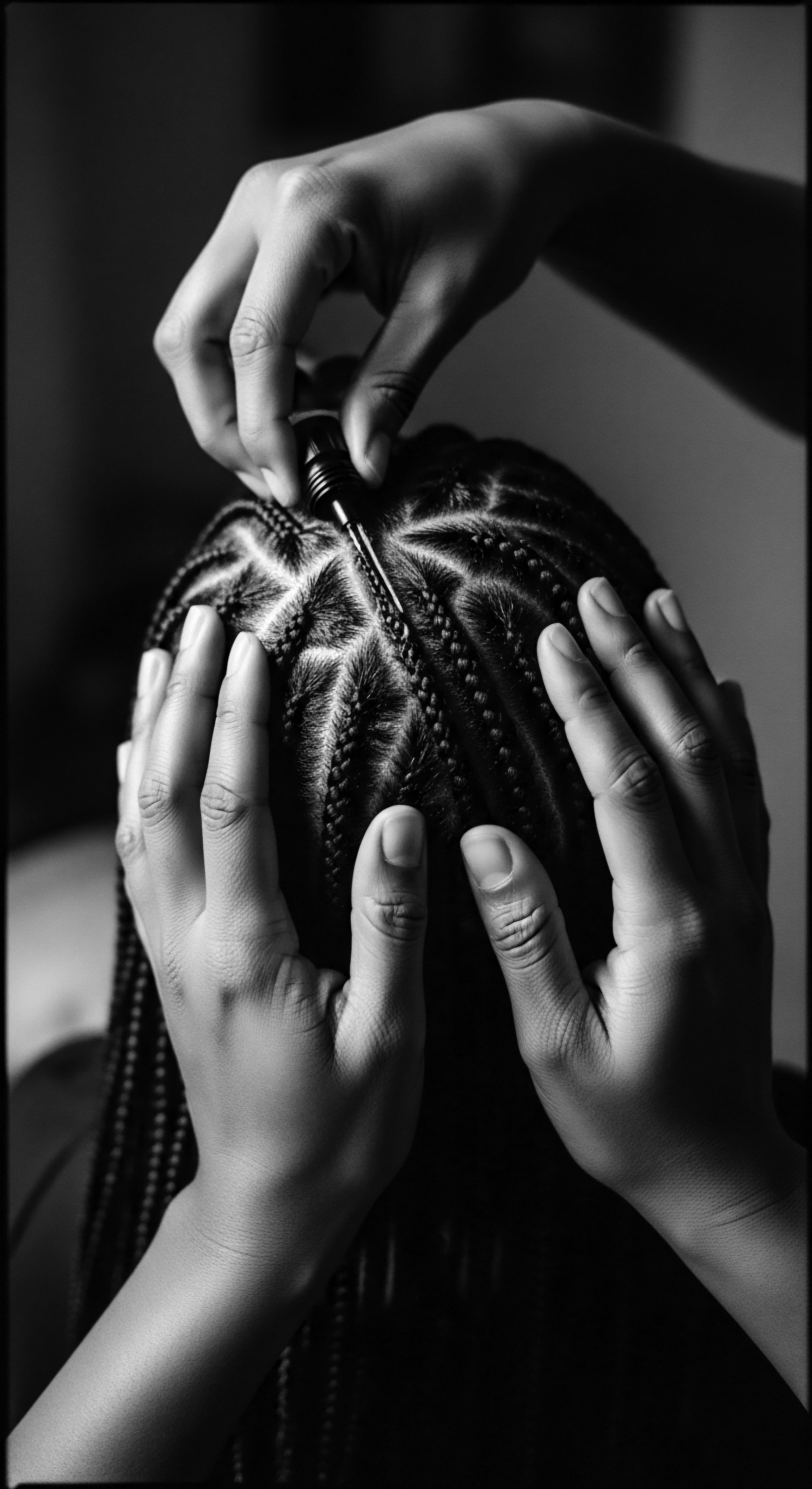
Elemental Aspects of Care in Early Practices
Beyond aesthetic considerations, early Heritage Adornment practices were intrinsically tied to the essential care of textured hair. Ancestral wisdom understood the unique structural qualities of coiled and curly hair, recognizing its need for specific nourishment and gentle handling. Natural ingredients, gathered from the earth, were vital components of these routines.
Butters, plant oils, and herbal infusions were carefully applied, preserving moisture, providing protection, and promoting healthy growth. The act of cleansing, detangling, and conditioning was often a deliberate, unhurried process, emphasizing mindful engagement with the hair as a sacred part of the self.
These rituals often involved specialized combs carved from wood or bone, and the application of natural butters and powders to aid moisture retention. Such practices underline a historical understanding of hair health that predates modern scientific classification, yet aligns with its principles. It was this practical knowledge, passed down through oral tradition and lived experience, that allowed textured hair to be cultivated into the remarkable expressions seen throughout history.
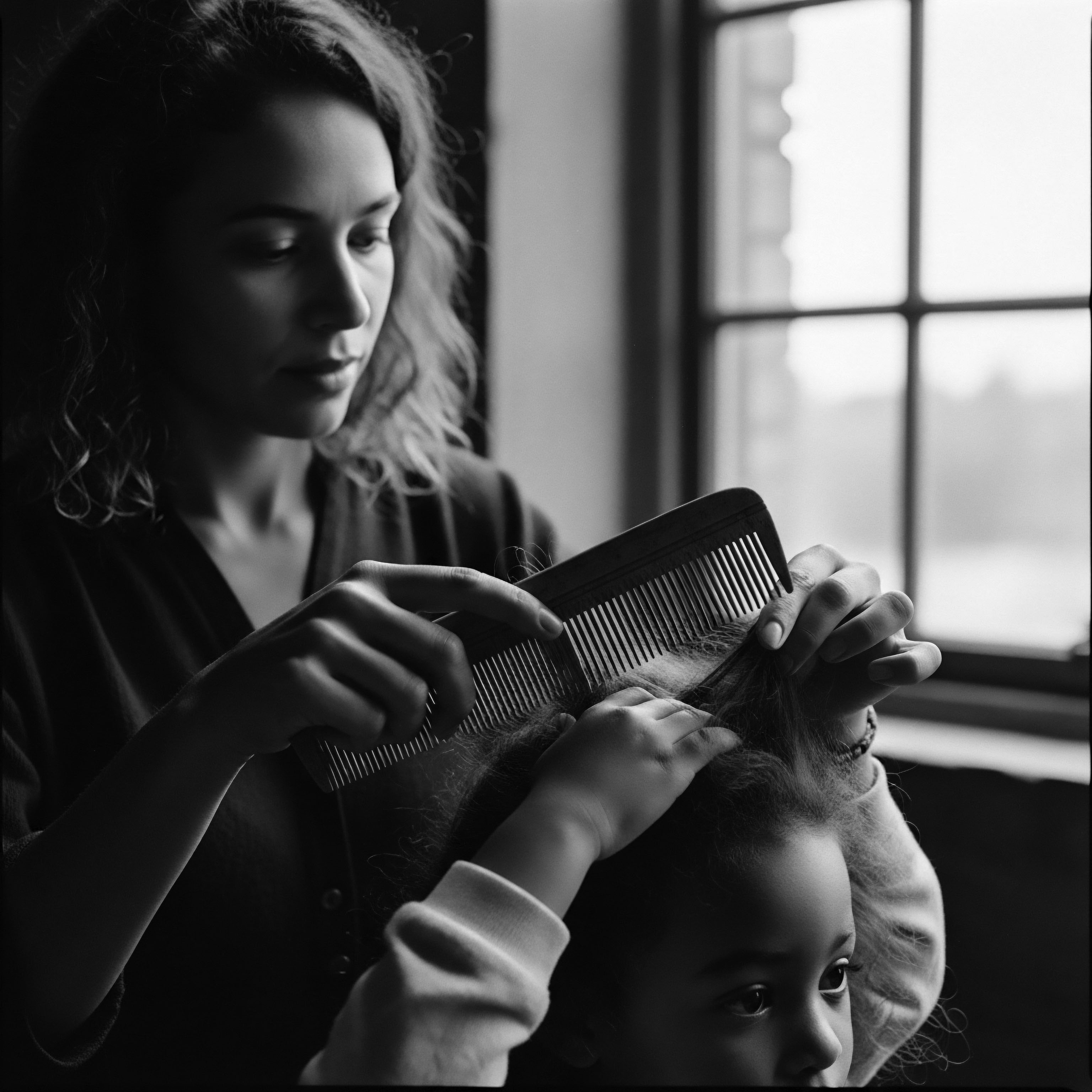
Intermediate
Building upon the foundational understanding, the intermediate exploration of Heritage Adornment deepens our appreciation for its layered significance, particularly within the historical trajectory of Black and mixed-race hair experiences. This concept moves beyond simple definition to encompass the complex interplay of cultural legacy, resilience, and profound identity. It recognizes that the adornment of textured hair has served as a vibrant language, speaking volumes even when voices were suppressed. The meaning embedded within these styles and practices tells a continuous story of survival, cultural retention, and self-definition.
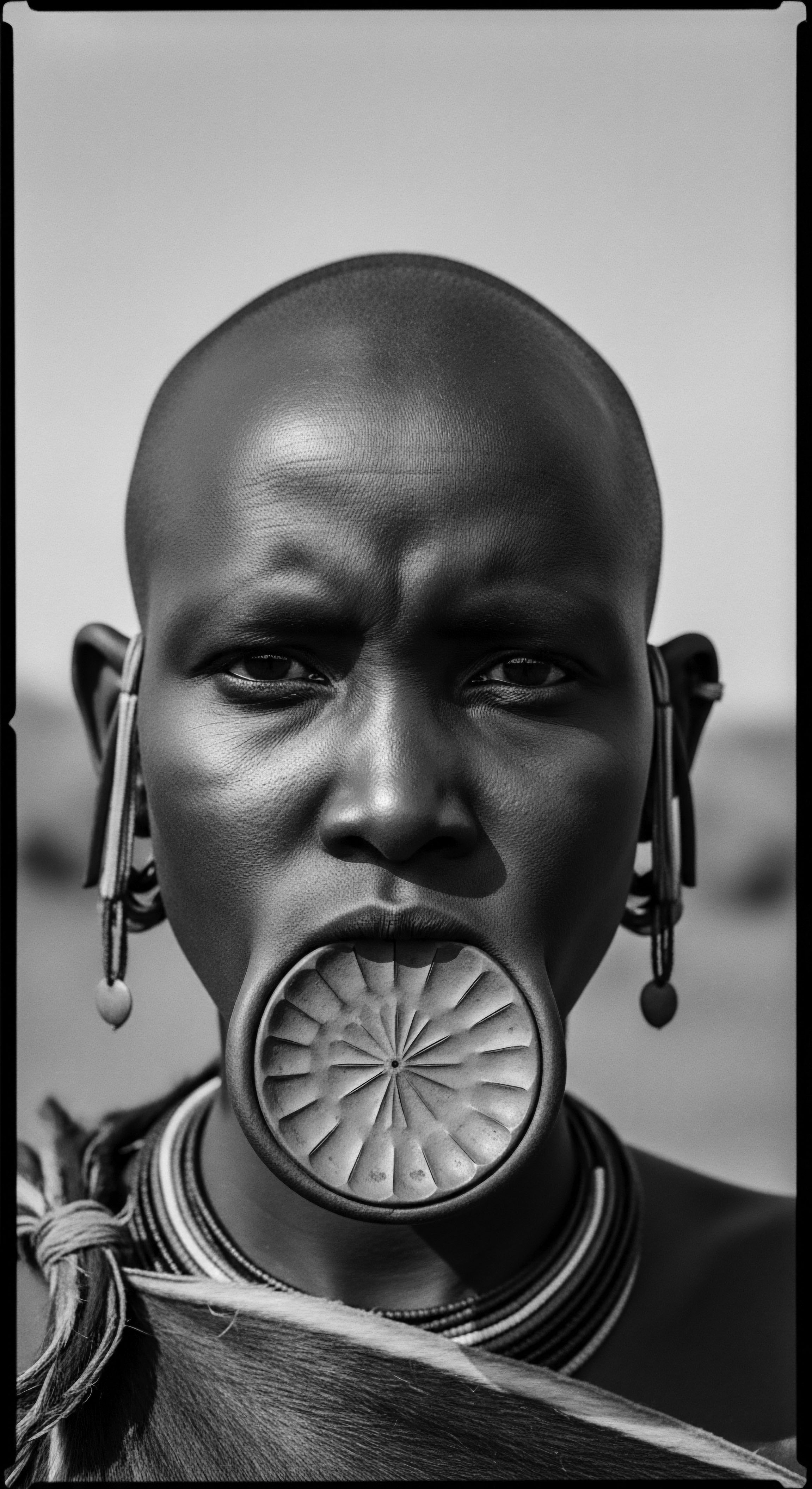
Cultural Cartographies Woven in Strands
In pre-colonial African societies, hair styling was a sophisticated system of cultural cartography, indicating a person’s standing, their age, their marital status, and often their tribal affiliation. A style could signal readiness for marriage, mourning, or triumph in battle. The Yoruba people of Nigeria, for instance, crafted elaborate hairstyles that communicated their community roles, while the Himba tribe in Namibia covered their locs with red ochre paste, a symbol of their connection to the earth and their ancestors. This demonstrates how Heritage Adornment served as a dynamic, visible register of a person’s life journey and communal ties.
The societal standing of individuals was frequently reflected in the complexity and ornamentation of their hair. Leaders, spiritual figures, and esteemed elders wore distinct styles that commanded respect and signified their wisdom. These traditions were not rigid, but rather evolved, reflecting historical shifts and cultural exchanges across diverse ethnic groups, each maintaining its own distinct interpretation of hair as a profound medium for social and spiritual expression.
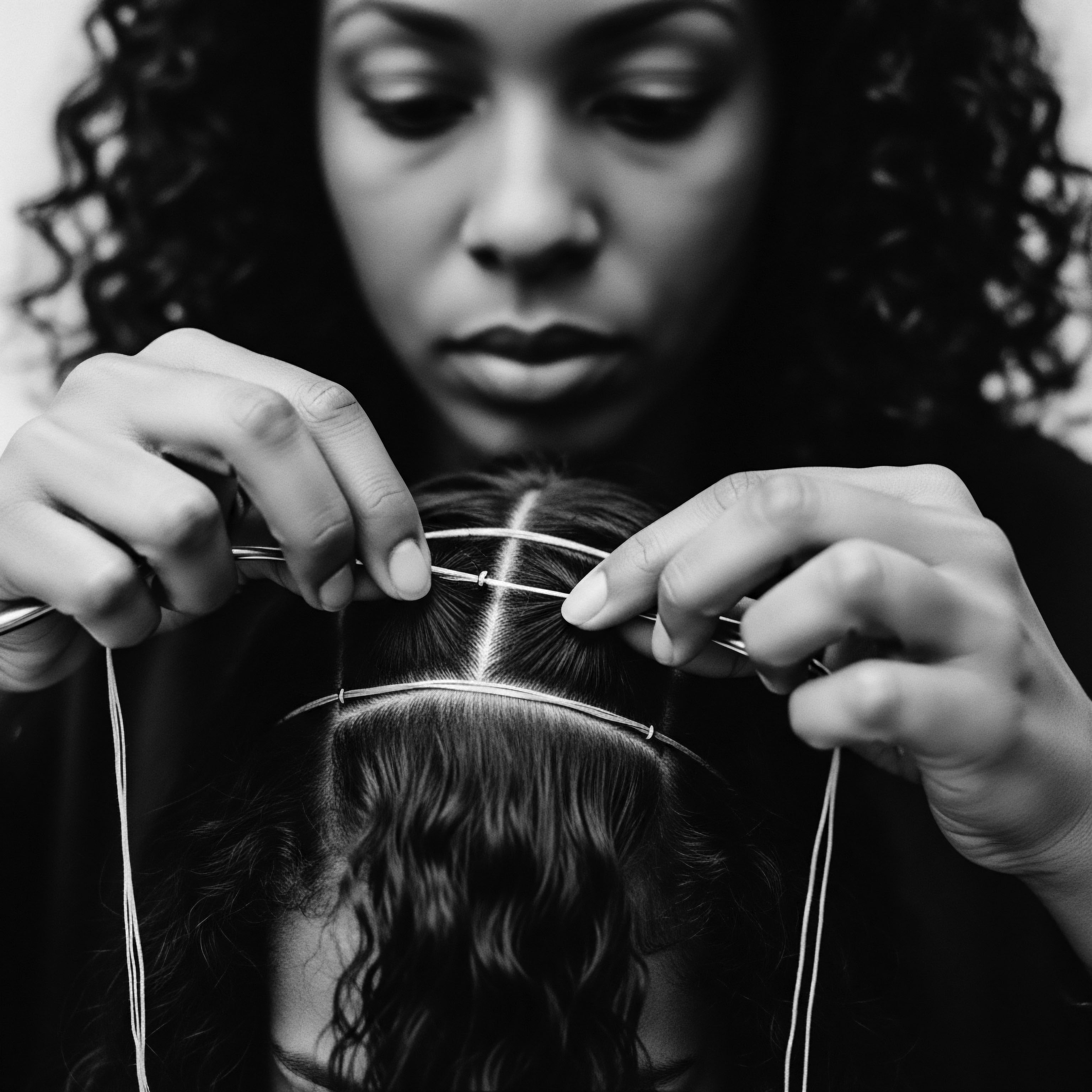
Resilience and Resistance in Adornment
The journey of Heritage Adornment through periods of profound adversity, particularly the transatlantic slave trade and colonialism, reveals its enduring power as a symbol of resilience. As African peoples were forcibly removed from their homelands, their hair became a site of both dehumanization and defiant cultural preservation. Slaveholders routinely shaved the heads of captured individuals, attempting to strip away their identity and cultural ties, making it easier to dehumanize them. Despite these horrific efforts, the practices of Heritage Adornment persisted in subtle, courageous ways.
Enslaved individuals found ways to maintain traditional styles, often using rudimentary tools and materials, transforming the act of hair care into a quiet act of rebellion and a testament to their enduring heritage. These hairstyles became an assertion of self, a rejection of imposed dehumanization. The significance of their resilience becomes particularly clear when considering how these practices were maintained under duress.
Heritage Adornment became a powerful, subtle act of resistance and cultural preservation for enslaved Africans, transforming hair into a symbol of defiance against dehumanization.
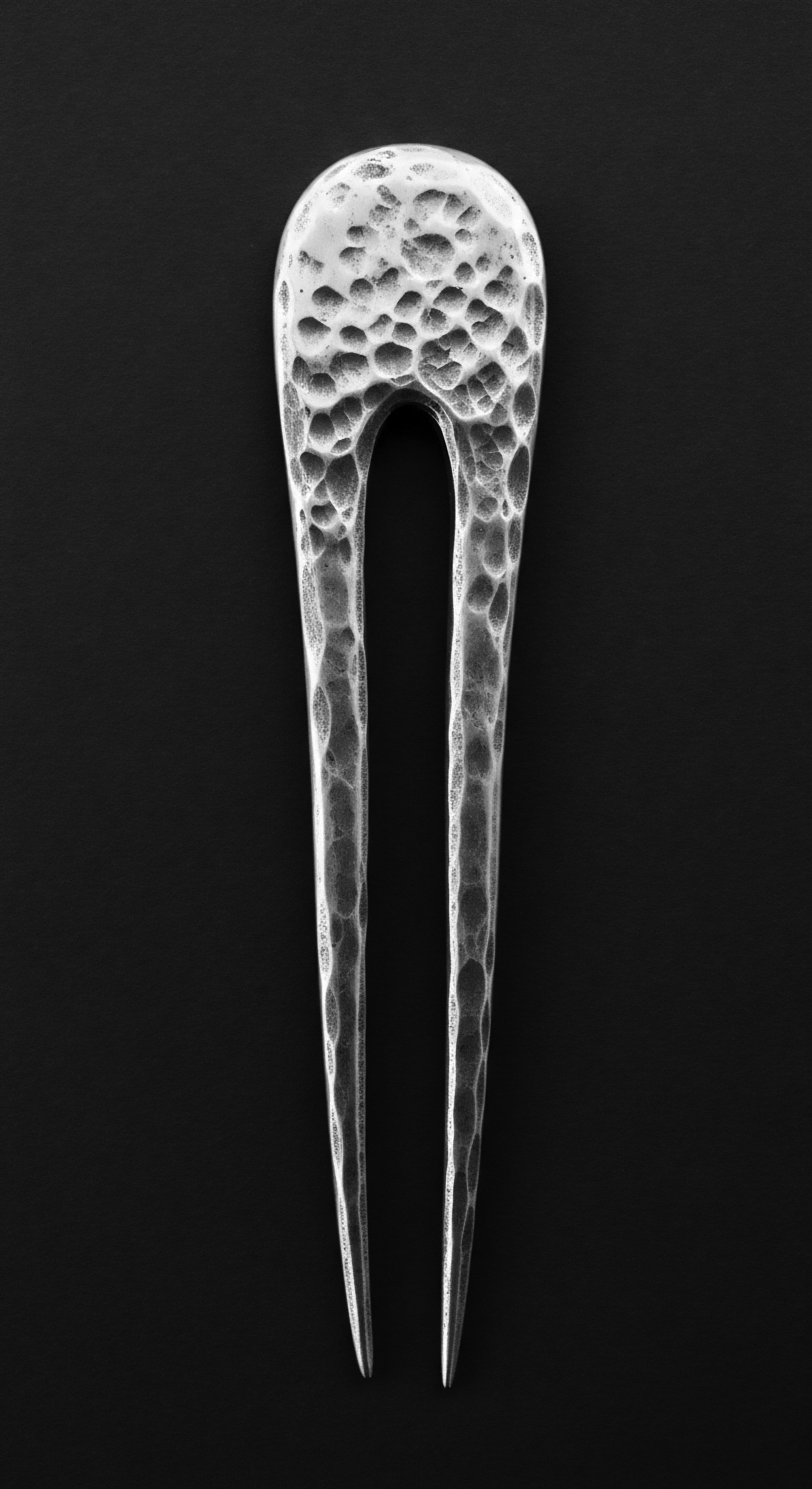
Hair as a Medium of Coded Communication
Beyond personal identity, hair in enslaved communities served as a clandestine form of communication. When spoken words were monitored, and literacy was forbidden, intricate braids could relay secret messages, even charting paths to freedom. Oral accounts speak of enslaved individuals braiding patterns that mimicked maps, guiding escapees to safety.
Other historical records describe how braids concealed grains of rice, beans, and seeds, providing sustenance during treacherous journeys or allowing individuals to cultivate their own crops upon reaching new settlements. This profound adaptation transformed hair into a tool for survival and collective resistance, showcasing the ingenuity and determination embedded within Heritage Adornment.
This deep, hidden meaning speaks to the extraordinary lengths to which people went to preserve their cultural practices and communal safety. The ability to carry vital information and resources within one’s hair underscores its multifaceted role beyond mere aesthetics; it was a lifeline, a silent declaration of hope against overwhelming odds.
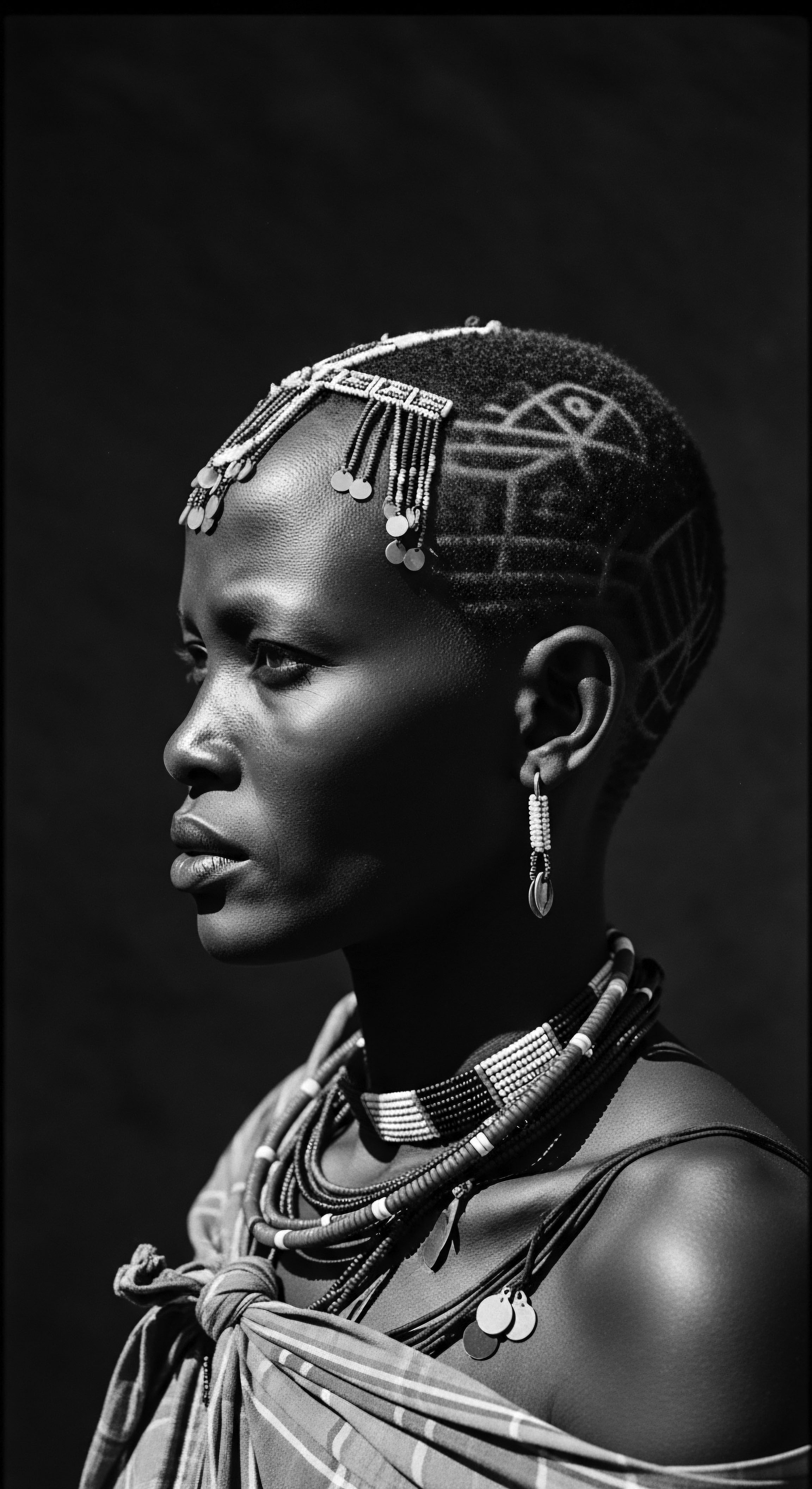
Sacred Materials and Symbolic Ornamentation
The physical elements used in Heritage Adornment carried deep symbolic weight, reflecting cultural beliefs, spiritual connections, and the abundance of the natural world. These materials were chosen not only for their aesthetic appeal but for their inherent properties and the stories they told.
- Cowrie Shells ❉ Widely used in traditional African and Afro-Caribbean hair adornments, cowrie shells were threaded onto braids, cornrows, and locs. They symbolized beauty, femininity, and cultural pride. Beyond their visual appeal, cowrie shells held profound cultural and spiritual significance, often representing prosperity, fertility, and abundance. They served as a direct link between the spiritual realm and the physical world, connecting individuals to their ancestors. Notably, during the slave trade, cowrie shells were transported to the Americas on the bodies of kidnapped Africans, becoming symbols of a stolen home and a determination to survive. Even today, they remain important items in African and African American cultures, symbolizing history, currency, and continuing self-adornment and ritual roles.
- Beads ❉ Crafted from various materials such as glass, wood, or clay, beads were woven into hair to signify social status, age, or tribal affiliation. Their colors and arrangements often conveyed specific messages.
- Fabrics and Wraps ❉ Headwraps, beyond their practical use for protection, served as symbols of elegance and sophistication, often worn during significant events. They provided another layer of adornment, allowing for intricate folding and draping that showcased personal style while honoring tradition.
- Natural Butters and Oils ❉ Shea butter, palm oil, and various herbal concoctions were not just moisturizers; they were vital for hair health and seen as blessings from the earth, connecting the wearer to the land and its sustenance. These ancient hair care routines, passed through generations, maintained the integrity of textured hair, ensuring it remained pliable for styling.
The purposeful selection and integration of these materials demonstrate a holistic approach to Heritage Adornment, where every element contributes to a deeper meaning and connection to ancestral practices. It was a conscious act of drawing strength and identity from the earth and from communal wisdom.
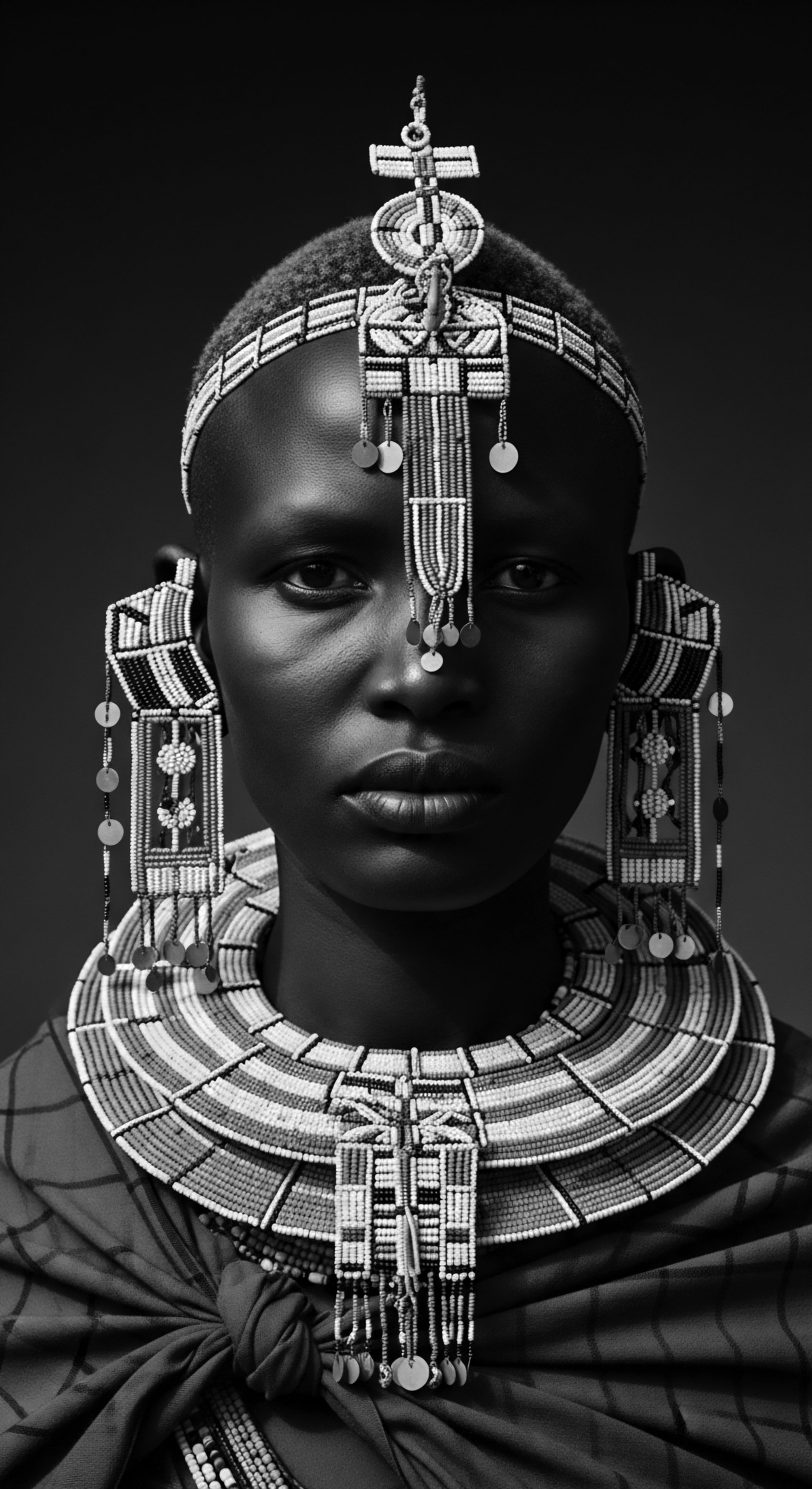
Academic
The academic elucidation of Heritage Adornment transcends superficial definitions, positioning it as a complex socio-cultural construct deeply entwined with the history, identity, and lived experiences of individuals with textured hair, particularly within Black and mixed-race communities. This rigorous interpretation acknowledges the profound interplay between elemental biology, ancestral practices, and the relentless forces of societal pressure and resistance. Heritage Adornment, in this context, is not a static concept; it is a dynamic phenomenon, a living archive of human adaptation, artistic expression, and enduring cultural agency. It functions as a declarative statement, often silent yet always potent, of selfhood against historical attempts at cultural erasure.
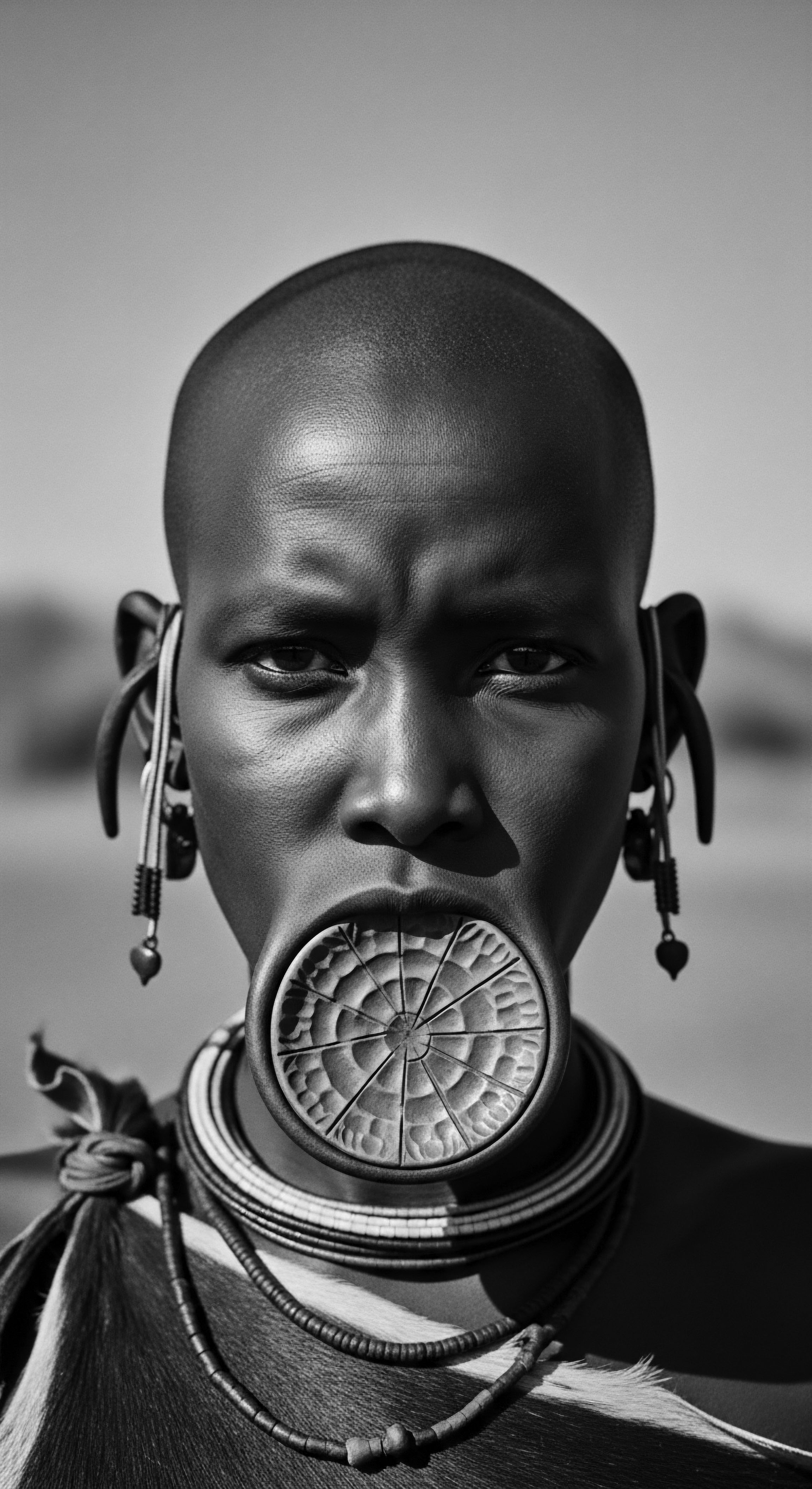
The Deep Grammar of Hair ❉ Echoes from the Source
To grasp the full measure of Heritage Adornment, one must first appreciate the inherent nature of textured hair itself. Its unique helical structure, ranging from loose waves to tightly coiled patterns, presents distinct biological characteristics that necessitate specialized care. Modern trichology, while offering scientific explanations, frequently validates the practices cultivated through ancestral wisdom. The natural predisposition of textured hair to dryness, for instance, due to its elliptical cross-section and fewer cuticle layers, meant that pre-colonial African care regimens instinctively prioritized moisture retention through natural butters, oils, and protective styles.
This elemental understanding formed the bedrock of Heritage Adornment. It was a symbiotic relationship ❉ the hair’s intrinsic properties dictated the care, and the care, in turn, informed the art of adornment. The protective styles, such as braids, twists, and locs, were not merely decorative.
They served a vital purpose in shielding the hair from environmental damage and reducing manipulation, thereby preserving its integrity and encouraging growth. This reciprocal dance between biology and practice highlights a sophisticated, intuitive scientific understanding that has been passed down through generations, often without formal documentation, yet empirically proven through centuries of healthy hair.

The Tender Thread ❉ Cultivating Care and Community
The practices surrounding Heritage Adornment were, and remain, deeply communal. Hair care sessions often extended for hours, providing a sacred space for intergenerational knowledge transfer, storytelling, and social bonding. Grandmothers, mothers, aunts, and sisters would gather, sharing techniques, discussing life, and weaving narratives into the very strands of hair.
This collective ritual fostered a profound sense of belonging and reinforced cultural values. The physical act of grooming became a tender thread, connecting individuals to their lineage and their community.
This shared experience served as a powerful mechanism for cultural continuity, especially during periods when traditional expressions were suppressed. It was in these intimate settings that the true meaning of Heritage Adornment was passed on ❉ not just the how-to, but the why—the deep-seated belief in the hair as a conduit for ancestral spirit, a crown of glory, and a resilient symbol of identity. The emotional resonance of these moments created an unbreakable bond, preserving heritage even when external forces sought to dismantle it.
The communal aspect of Heritage Adornment rituals served as a powerful conduit for intergenerational knowledge transfer and the preservation of cultural identity within textured hair traditions.
Moreover, these gatherings provided a space for mutual aid and emotional support. The time spent in shared styling was an opportunity for discussion, problem-solving, and the reaffirmation of collective identity. The intricate process of hair creation, often a multi-hour commitment, was an act of sustained attention, care, and dedication, mirroring the sustained effort required to uphold cultural heritage in challenging circumstances.
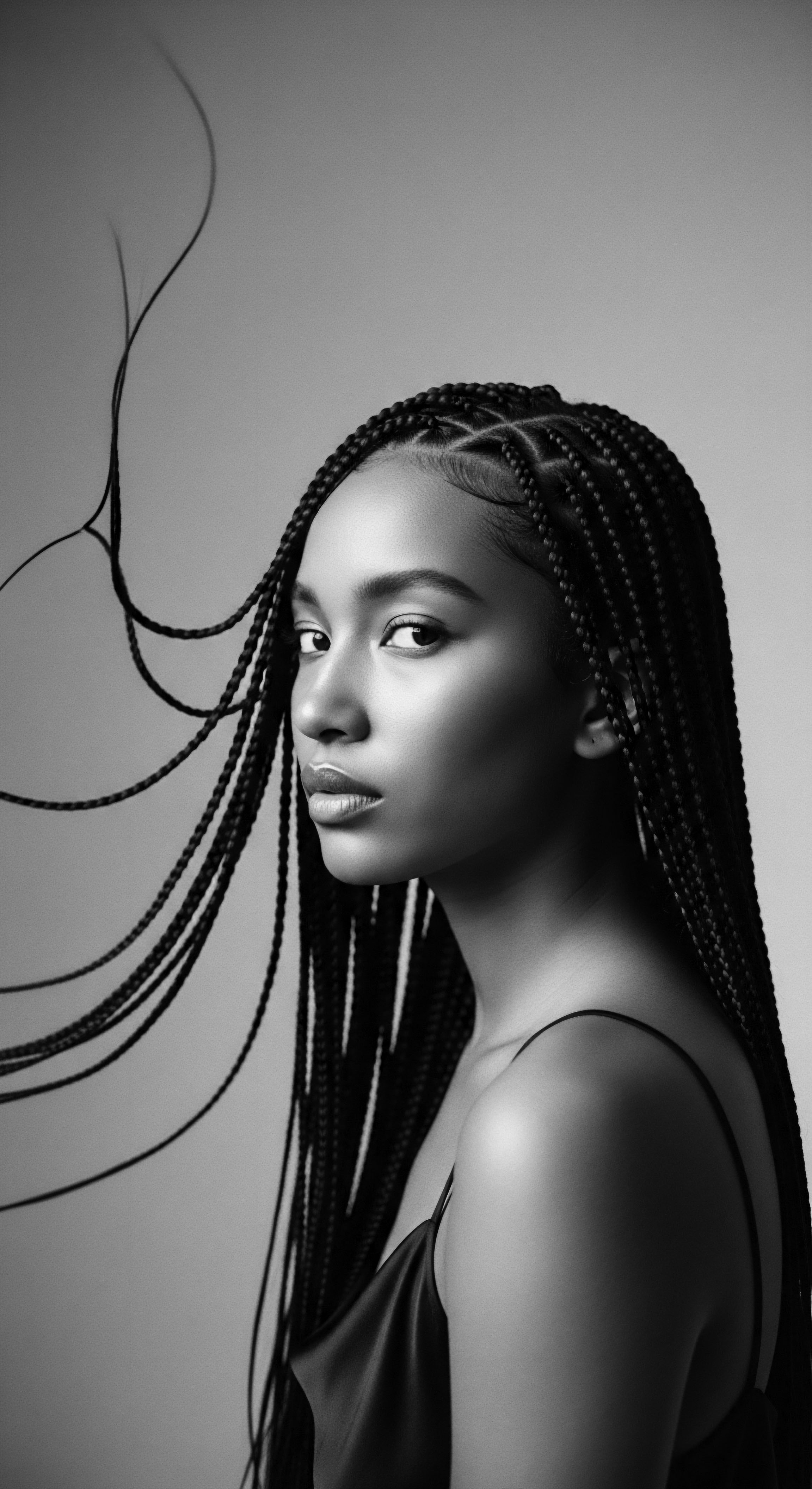
The Unbound Helix ❉ Identity, Resistance, and Modern Expressions
The journey of Heritage Adornment continues into contemporary society, embodying an ongoing dialogue between ancestral wisdom and modern lived realities. The “unbound helix” represents the breaking free from imposed Eurocentric beauty standards that historically sought to denigrate textured hair, recognizing its natural form as inherently beautiful and powerful. This re-centering of identity, often rooted in Afrocentric frameworks, signifies a collective consciousness asserting agency over self-definition.
The historical weaponization of hair texture against Black and mixed-race individuals is a critical aspect of understanding this journey. During enslavement, hair texture was used to create a caste system, where those with straighter hair were granted “privileges,” while those with coily hair were relegated to arduous manual labor. This enforced hierarchy ingrained notions of “good” versus “bad” hair, perpetuating a self-hate that endured for centuries.
The Civil Rights Movement in the mid-1960s marked a profound shift, with the Afro hairstyle becoming a potent emblem of Black pride, unity, and resistance against Eurocentric norms. Figures such as Angela Davis and the Black Panther Party popularized the Afro as a statement of defiance, celebrating African roots and rejecting assimilation. This period saw a significant return to natural styles, not as mere fashion, but as political statements and a reaffirmation of African American identity.
| Era Pre-Colonial Africa |
| Key Adornment Styles/Practices Cornrows, braids, locs, elaborate wigs, adornment with beads, shells, ochre |
| Cultural Significance Signified social status, age, marital status, tribal identity, spiritual beliefs, community roles |
| Era Slavery/Colonialism |
| Key Adornment Styles/Practices Secretly maintained braids, headwraps, use of natural butters for hair health |
| Cultural Significance Acts of defiance, covert communication (maps, seeds), preservation of dignity and heritage amidst oppression |
| Era Civil Rights/Black Power Era |
| Key Adornment Styles/Practices Afro, cornrows, braids, locs |
| Cultural Significance Symbol of Black pride, political statement, rejection of Eurocentric beauty standards, reclamation of identity |
| Era Contemporary Natural Hair Movement |
| Key Adornment Styles/Practices Diverse natural styles (wash-and-gos, twist-outs, braid-outs, locs), protective styles, braids, wigs, weaves |
| Cultural Significance Self-love, cultural reclamation, empowerment, challenging workplace discrimination, identity formation, economic agency |
| Era These practices illustrate the enduring adaptability and profound meaning of Heritage Adornment across centuries, continuously affirming identity and cultural pride. |
Today, the natural hair movement continues this legacy, celebrating textured hair in all its forms and challenging discriminatory practices in schools, workplaces, and broader society. The ongoing societal pressures are significant. For example, the CROWN 2023 Research Study revealed that 41% of Black Women Altered Their Hair from Curly to Straight for Job Interviews, and 54% Believed They should Have Straight Hair for Such Occasions. This powerful statistic underscores the persistent economic and professional implications tied to hair texture, even in modern times, validating the historical challenges faced by Black women in navigating beauty standards for career advancement.
The economic dimensions of the Black hair care industry are substantial, often highlighting complex issues. The industry, valued at billions of dollars, faces concerns regarding unethical supply chains for human hair products and texture-based price discrimination. Studies indicate that coily/curly hair products are, on average, more expensive than those for straight hair, revealing a potential “ethnic tax” on products essential for maintaining natural textured hair. This economic reality emphasizes the financial burden often associated with embracing one’s heritage through hair care.
The journey of Heritage Adornment is a powerful assertion of self-love and cultural pride, overcoming historical impositions and ongoing societal pressures to redefine beauty on its own terms.
The reclamation of natural hair also fosters new communities and platforms for shared knowledge. Online spaces for natural hair care have become vital for Black women to negotiate identity, share resources, and collectively work at undoing internalized racism. These digital hearths extend the communal aspect of Heritage Adornment, allowing for widespread education and a collective voice that aims to reshape narratives around Black women’s hair. This movement is a testament to the fact that hair is not merely a physical attribute; it is an emotive and deeply personal aspect of identity for Black women, inextricably linked to their sense of self.
The contemporary understanding of Heritage Adornment acknowledges its continuous evolution, from ancestral reverence to a symbol of modern empowerment. It is a testament to the enduring human spirit’s capacity to find beauty, meaning, and resilience in the most elemental aspects of self, continuously drawing strength from the deep well of cultural memory. This ongoing redefinition ensures that textured hair remains a vibrant, living expression of heritage, constantly adapting yet always rooted.
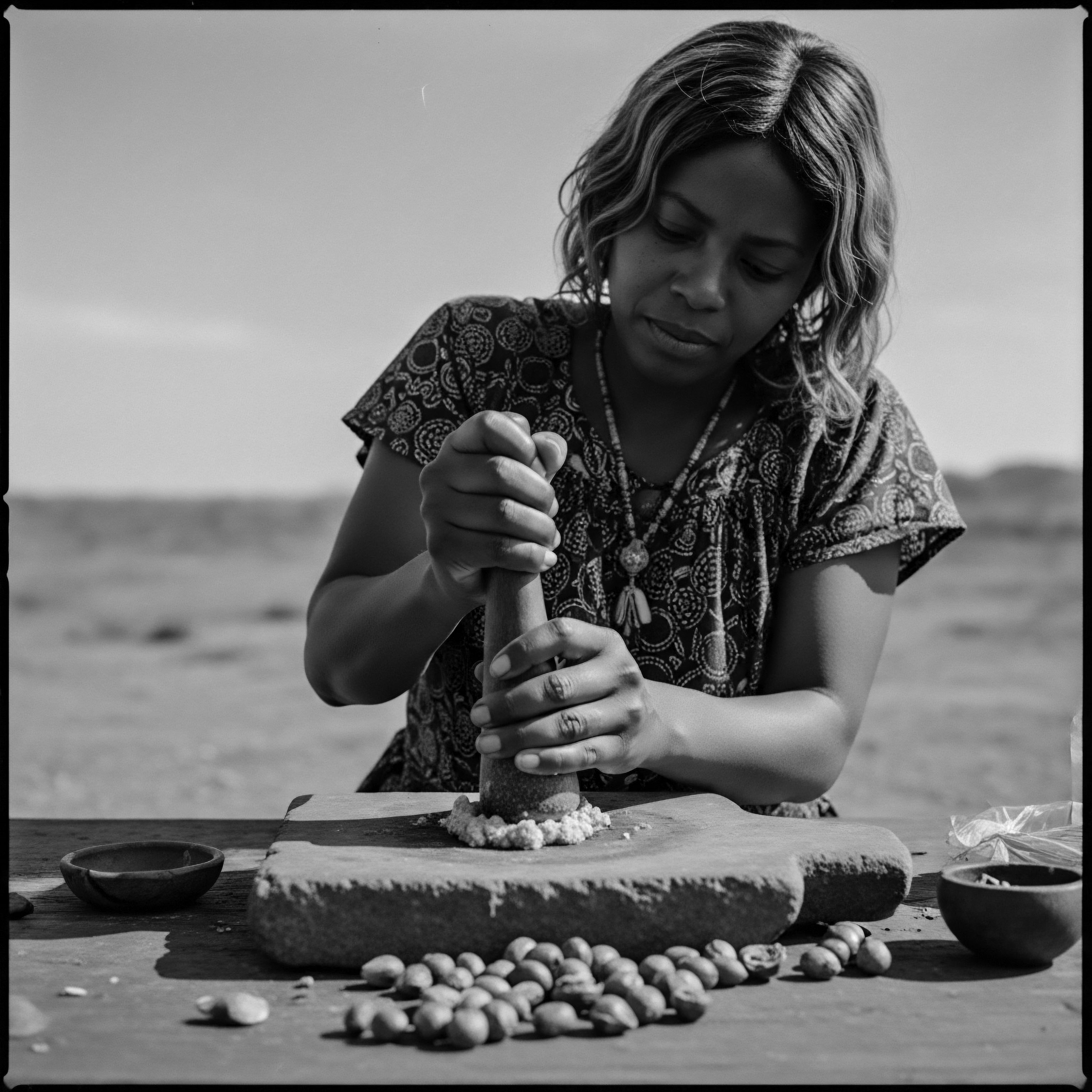
Reflection on the Heritage of Heritage Adornment
The enduring legacy of Heritage Adornment reminds us that hair, especially textured hair, is a living, breathing testament to generations of wisdom, struggle, and boundless creativity. It is more than just follicles and strands; it is a profound meditation on belonging, a continuous thread connecting us to the hands that once braided, the voices that once sang, and the spirits that guided our ancestors. The journey from elemental biology to complex cultural expression, from ancient rituals to modern movements of self-acceptance, reveals an unbroken lineage of care and identity.
As we look upon the vibrant expressions of textured hair today, we witness the echoes of ancient ceremonies, the resilience forged in adversity, and the triumphant assertion of selfhood. Each coil and curl holds within it the whispers of history, the courage of resistance, and the radiant hope for future generations. The Heritage Adornment, then, is a continuous act of honoring that past, acknowledging the present, and shaping a future where every strand tells a story of pride, authenticity, and profound connection to the universal spirit. It beckons us to look deeper, beyond superficial appearance, into the very soul of a strand, recognizing the ancestral wisdom that continues to guide our hands and hearts in the tender care of our crowns.
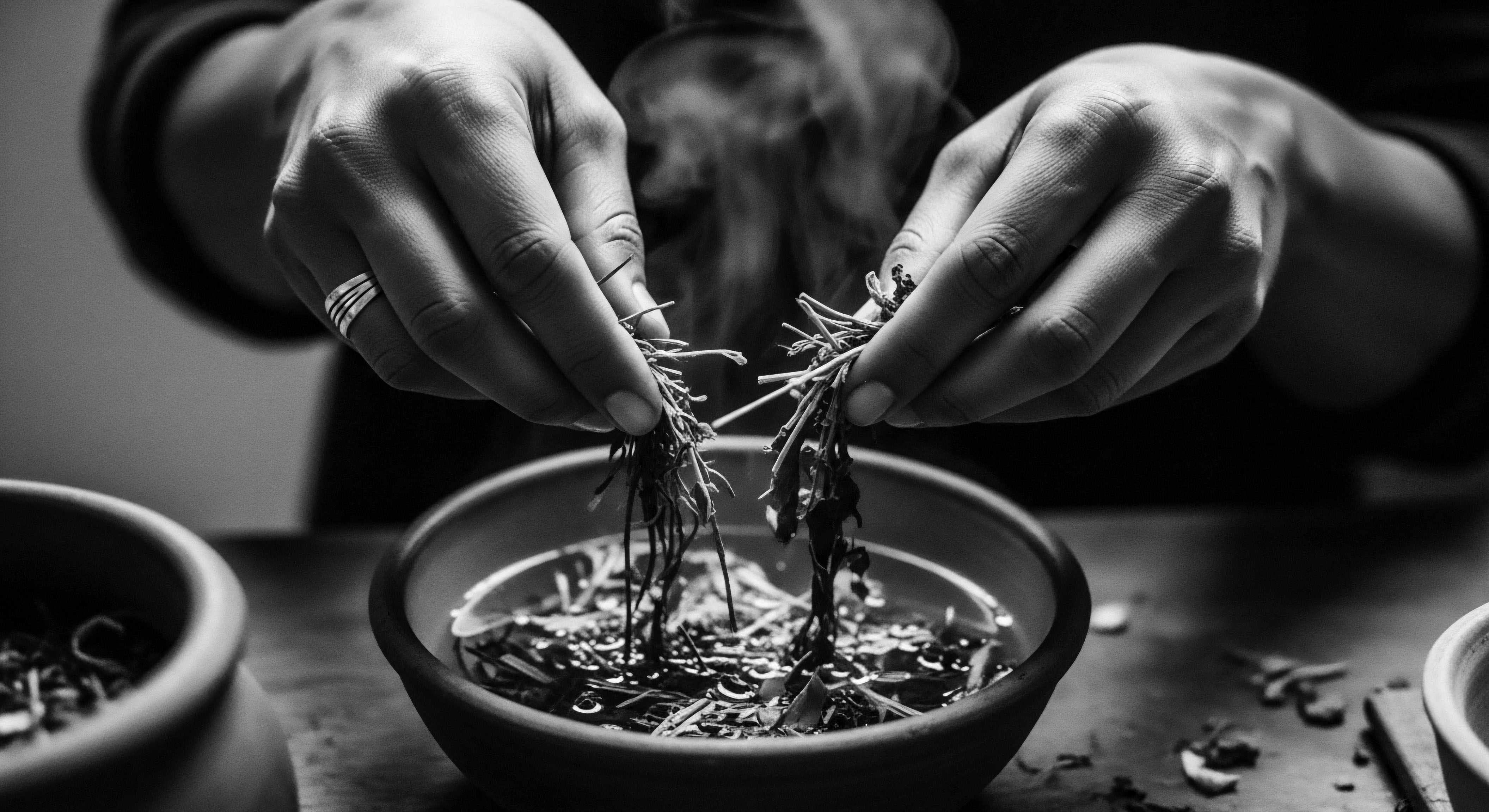
References
- Afriklens. (2024). African Hairstyles ❉ Cultural Significance and Legacy.
- Banks, C. A. M. (2000). The Black Hair Care Market ❉ A Multi-Billion Dollar Industry Built on Racism and Self-Hate.
- Byrd, A. D. & Tharps, L. L. (2014). Hair Story ❉ Untangling the Roots of Black Hair in America. St. Martin’s Press.
- Darkspark. (2023). The Complex History of Black Hair.
- Dove, A. & Powers, S. L. (2018). The Importance of Hair in the Identity of Black People. American Journal of Black Studies, 48(7), 639-650.
- Johnson, T. A. & Bankhead, T. (2014). Hair It Is ❉ Examining the Experiences of Black Women with Natural Hair. Open Journal of Social Sciences, 2(1), 64-70.
- Liong, M. (2022). Why I Wear Cowrie Shells in My Locs and What it Means. WhatNaturalsLove.com.
- Miller, K. M. (2013). The Politics of Black Women’s Hair. Journal of Undergraduate Research at Minnesota State University, Mankato, 13, Article 4.
- Ortiz, J. (2024). Cowrie Shells ❉ Cultural and Economic Ties in the 18th-Century Atlantic World.
- Pre-Colonial African Hairstyles ❉ A Journey Through Time and Culture. (2024). Assendelft.
- Ray, R. (2024). Embracing Roots ❉ The Resilience of African American Women Through Their Natural Hair. Childish Mane LLC.
- The Crown Act Research Study. (2023).
- Ujima Natural Hair and the Black Community Black Paper_kmc. (n.d.).
- Upsera Jewelry. (n.d.). The History And Symbolism Of Cowrie Shell Necklaces.
- Wallace, K. R. & Byrd, A. D. (2023). What Every Dermatologist Must Know About the History of Black Hair.
